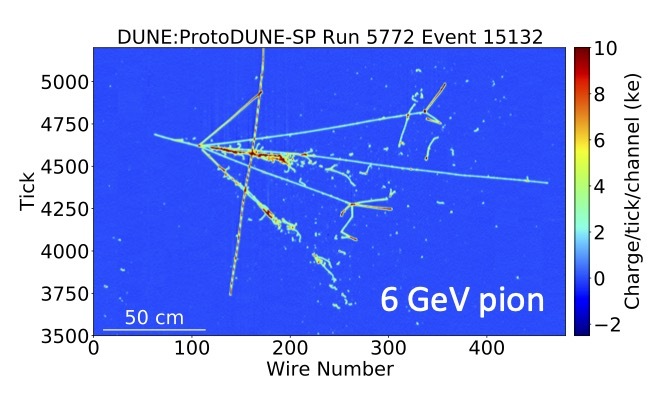Neutrino Physics
The field of Neutrino Physics suffered a complete revolution twenty years ago with the discovery of neutrino oscillations. This phenomenon, in which a certain type of neutrino transforms into a different one periodically, implies that neutrinos, postulated massless, have a non-zero mass. This observation revealed that the most accurate theory to explain the interactions among fundamental particles, the Standard Model, was incomplete. Over the last decade, the neutrino community has focused mainly on measuring with precision the three mixing angles and the two mass-squared differences that describe the amplitude and frequency of the neutrino oscillation probability. However, crucial questions about neutrinos remain unknown. We do not know yet the absolute value of the neutrino masses and their respective ordering, or if neutrinos can be their own antiparticles. We do not know whether if there are any other type of exotic neutrino, like the sterile neutrino. In the same way, we wonder if neutrinos preserve or violate the charge-parity (CP) symmetry of Nature, a symmetry between matter and antimatter, that in case of being violated would lead to differences in the behaviour of neutrinos and antineutrinos. The violation of the CP symmetry, although small, is well established for quarks. In the neutrino sector there are important hints that indicate CP violation but an observation with more than 5σ significance is still missing. This would be a major breakthrough to understand the imbalance of matter and antimatter in the Universe.


To meet the demands of the future and answer all these questions, there is a worldwide effort to develop two neutrino oscillation programs in the USA, with neutrinos being produced at Fermilab. The first programme is on a short-baseline base, aiming to study neutrino oscillations very close to the production source to probe the hypothesis of a new type of sterile neutrino. The other one is a long-baseline program, with the goal of detecting neutrino oscillations 1300 km from the source production source to primarily investigate the mass ordering and the CP violation in the neutrino sector.
In both neutrino programs the main detector technology will be based on the liquid argon time projection chambers (LArTPCs) that simultaneously measure light and ionisation charges produced after a particle interaction. In this detectors, when an incident charged particle ionizes the argon atoms, free electrons and positively charged ions are produced. In addition, argon scintillation light is emitted (128nm). These photons allow for the reconstruction of the interaction time. The electrons drifted with the help of an electric field towards charge readout planes. The combination of light and charge signals makes possible the 3D reconstruction of the event vertex and the tracks. The energy deposition of tracks can be used for calorimetry and particle identification.
In the view of this international landscape, we contribute to the development of one of the detectors integrated in the short-baseline program, SBND, and in the long-baseline experiment DUNE.
The SBND Experiment
The Short-Baseline Near Detector (SBND) will be one the three liquid argon neutrino experiments sitting in the Booster Neutrino Beam at Fermilab as a part of the Short Baseline Neutrino (SBN) program. In particular, SBND will be the near detector of the program, being located only 110 m from the neutrino production source. The experiments MircroBooNE and ICARUS are, respectively, the intermediate and far detectors in the program.
SBND will be a LArTPC with an active volume of 112 tons and aims to record over a million neutrino interactions per year. With such a large statistics, SBND will play a critical role in the searches of neutrino interactions for the SBN program. The large data sample will also allow studies of neutrino-argon interactions (GeV range) with unprecedented precision.

The DUNE Experiment
The Deep Underground Neutrino Experiment (DUNE) is the leading-edge next-generation long baseline neutrino experiment designed to probe the CP violation in the neutrino sector and determine the mass ordering. In particular, after 7 years of data taking, DUNE will measure the CP phase with more than 3σ significance for 65% of all the possible values and the mass ordering will be completely determined (>5σ) for any value of the CP phase.
For the Physics Community DUNE is the next accelerator-based mega-science project after the LHC at CERN (Switzerland). DUNE will have a very rich scientific program, starting from neutrino oscillations and including nucleon decay searches, astroparticle physics (e.g. supernova neutrinos) and a wide range of beyond the Standard Model physics, such as sterile neutrinos, non-standard interactions and extra dimensions. DUNE will consist of a highly capable near detector (ND) and a 40-kton fiducial mass far detector (FD) located 1300 km from the source at the Sanford Underground Research Facility (SURF).

